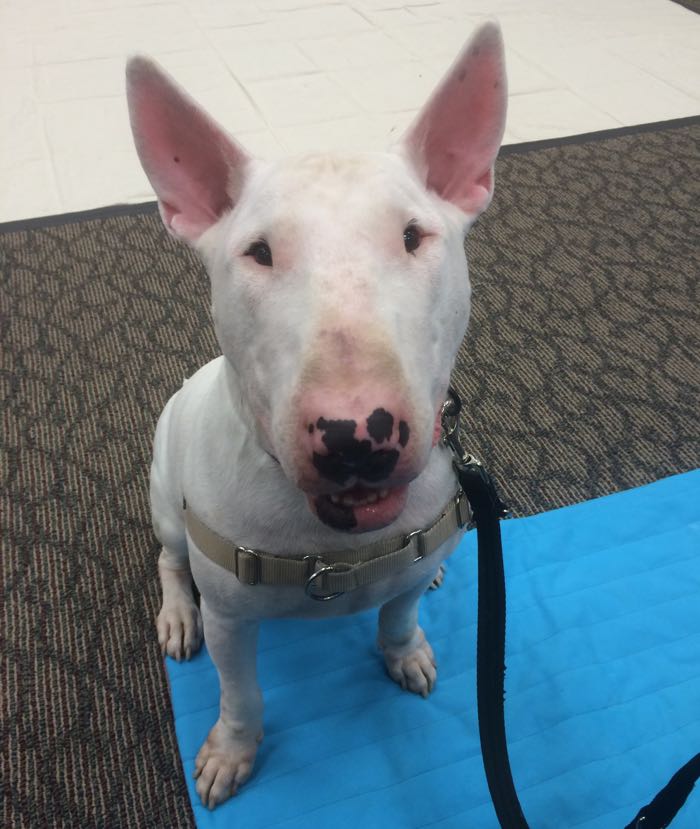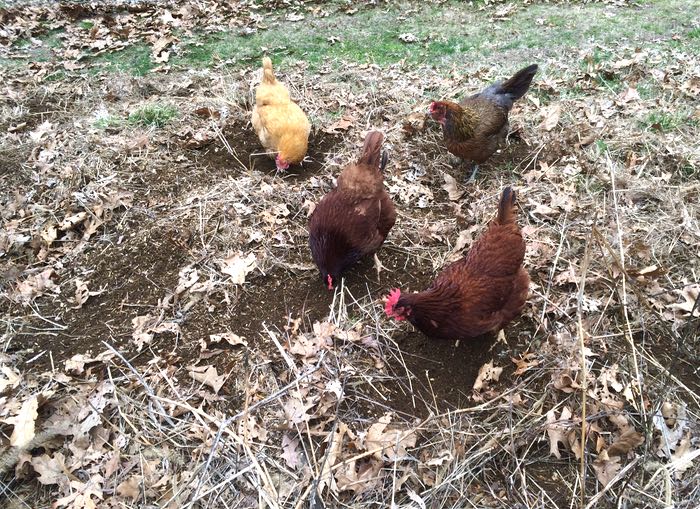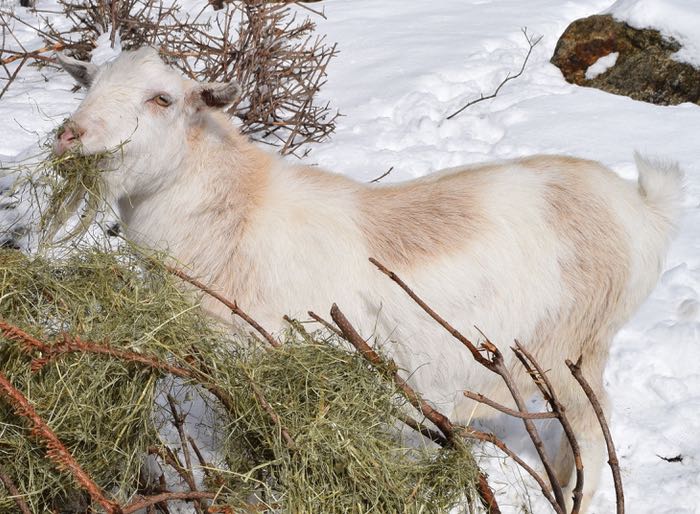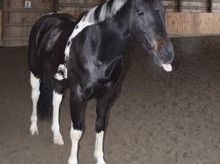Last week I attended ClickerExpo, which is a conference all about positive reinforcement training. Most of the people who go are dog trainers. It’s great to go to a conference where dogs are welcome! (I fell in love with this Bull Terrier.) I went to seminars that help me be a more nuanced trainer, and I got to talk, non-stop, with like-minded people.

At ClickerExpo, along with the dog people, there were also horse trainers, like me, and zoo keepers, too. One day at lunch I sat next to a man who, for the last 17 years, has cared for penguins at a zoo. What a great conversation that was!
I understand why some people don’t like zoos. It can be upsetting to see wild animals confined in small areas, on concrete and behind bars, in environments that aren’t like what they’d have in the wild. I remember going to the Staten Island Zoo decades ago, on a school field trip. Being near the animals was thrilling, but seeing the conditions, even then as a an uneducated child, was unsettling. On the other hand, there is nothing like being within a few feet of an exotic animal. At a zoo last week, I was transfixed by the flamingos, watching them dip those ridiculous heads, balance on one leg, and simply blink. The difference between in-person viewing and in a book is like the difference between seeing art on a postcard or in a museum. Just like a Jackson Pollack painting might look like a simplistic splatter pattern when viewed on a piece of paper that fits in your hand, when you stand next to a wall-sized canvas, you get it. So, too, a video of manatees isn’t anything like being two feet away from these massive, peaceful creatures as they float and bob up for air

Zoos have gone through, and continue to go through, transformation for the better. Some zoos are making more progress than others. Enclosures are now designed with the animals’ needs in mind. There is enrichment so that their lives are more interesting, and training so that veterinary procedures and handling isn’t stressful. For example, the elephants at the Cincinnati Zoo have been trained to put each foot, in turn, on a platform so that their toes can be trimmed. No longer are whips or tranquilizers used. Zoos are focused on education and on conservation. In some cases, some species would be extinct if it weren’t for the knowledge that they’ve gained studying the animals in the zoos, that has enabled resultant reproductive programs.
The conference was inspiring, but for me the highlight was the pre-conference backstage tour of the Cincinnati Zoo. We watched cheetahs get their exercise and fun by chasing a toy at 40 MPH. Afterwards, this cheetah purred as loudly as a car engine, while licking her handler. This sort of relationship only comes through training, respect, and providing the animal with what it needs to thrive.

A tortoise was out for a stroll with her keeper. It’s hard to know what a reptile thinks, but the joy of the children who got to pet her shell was obvious.

Educating children is part of this zoo’s mission. They have a petting area and a show that entertains while teaching about the animals. Among the stars, there is a trained skunk, a pig, a rabbit, a dog, and goats. The goats have been taught to paint. First they learned how to hold a paint brush in their mouths, and then how to swipe it on a canvas. Being typical picky goats, during the training process, they told their handler in no uncertain terms that they each had to have their own brush. No way would one goat deign to put a brush in his mouth that had been slobbered on by another goat. Others in the audience were surprised to hear that goats are fussy like this. I was not! We got to see a goat paint, and I got to be the easel! At the end of the video, note the click sound – that marks that the goat has done her job and is about to get a cookie.
One of my friends trains rhinos at another zoo. These are massive, dangerous animals, and yet it turns out that they bond with their keepers. She says that the ones that she knows like to being scratched on the folds of the skin on the hind end and will lift their legs to show their favorite place to be itched. She also says that the youngsters will roll over on their backs like dogs for a belly rub. Now that thought makes me happy!




















